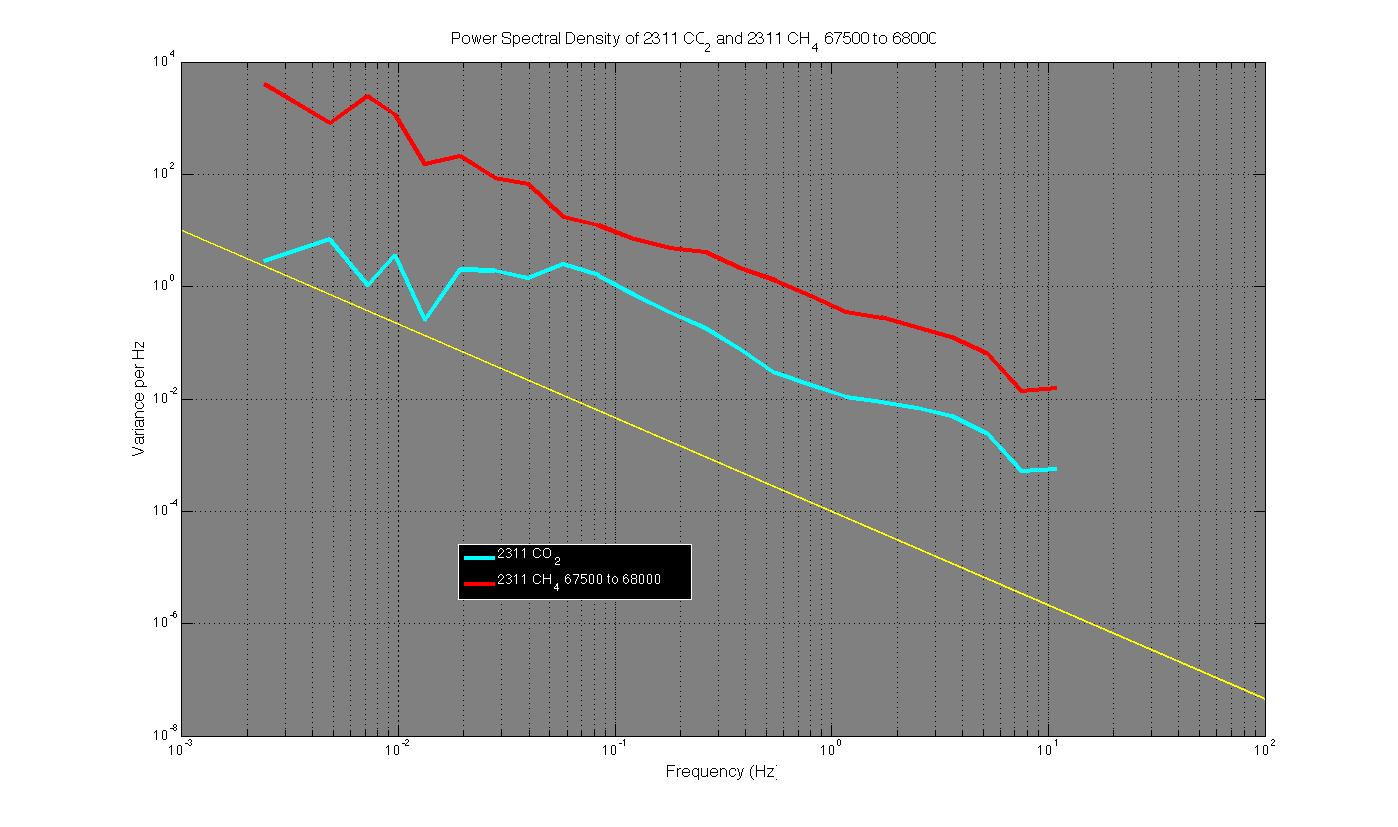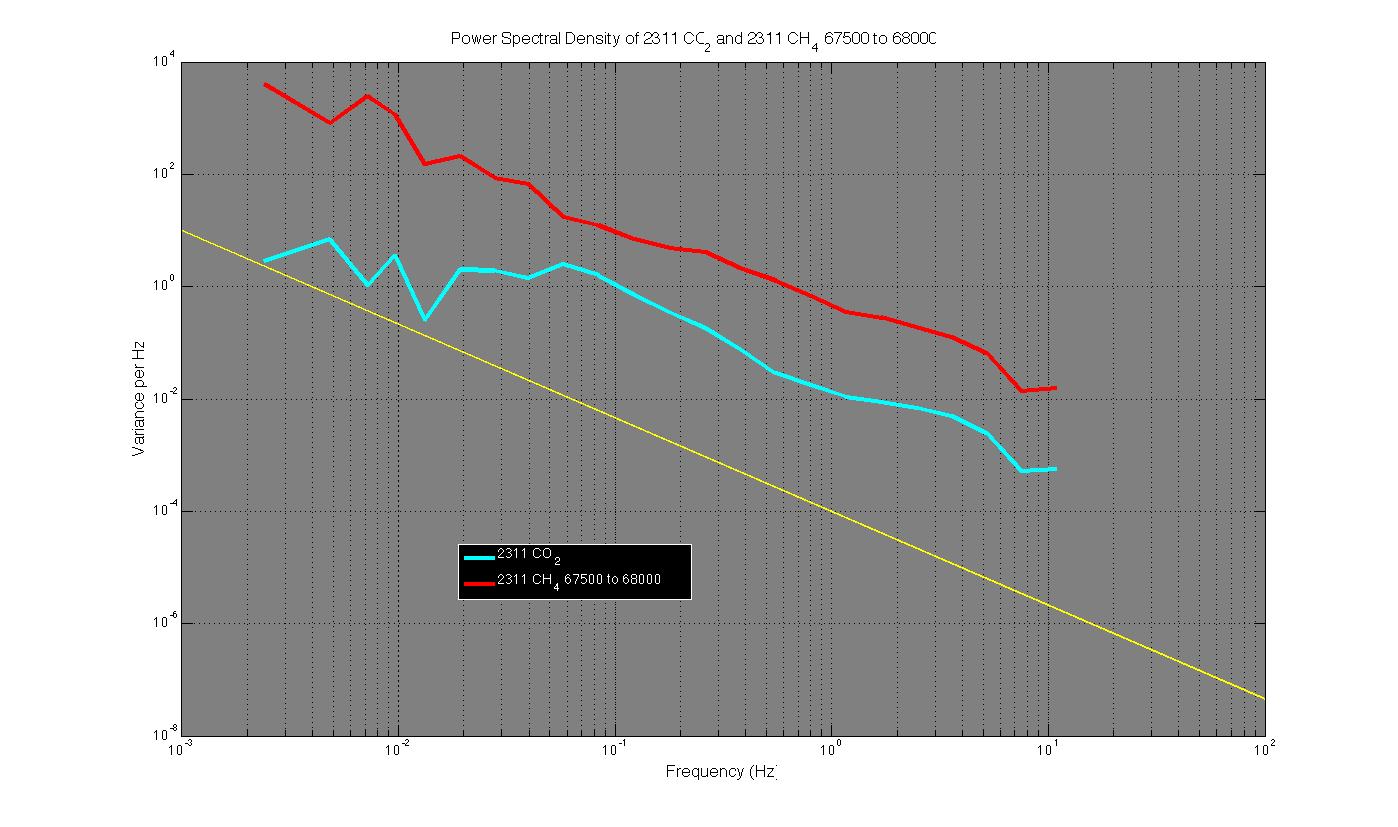PICARRO G1301-f In Situ Carbon dioxide (CO2) mixing ratio and Methane (CH4) Notes
- The instrument did not perform well enough during flights RF01-02 (6/3/13 & 6/5/13) to provide useable high rate data.
- Data from RF03 and RF04 (6/8/13 & 6/12/13) were measured with our G1301-f instrument. It does not have a water vapor channel, so we have to perform corrections based on humidity measured by other sensors and this necessity almost certainly leads to increased uncertainty, especially for vertical flux determinations.
- Data from RF05-RF19 were obtained from a borrowed model 2311 instrument. It has an internal water vapor signal and outputs an internally computed dry mixing ratio. All output data derive from this channel, rather than from our own calculation of a humidity correction factor. Since we were flying two Picarro sensors from RF05 onward. WARNING: Comparison of the two approaches does not give the same result. It is reasonable to assume the later model of the loaner instrument is more accurate, but this has not been confirmed by inference or direct measurement.
- For RF05 I plotted a few power spectral distributions for the CO2 and CH4 Picarro signals during 2 boundary layer transects. There are some indications of limitations of the flux measurement capability of the 2311 instrument as configured for NOMADSS. The first is that our inlet likely degrades the frequency response to a few Hz at best. Secondly, we see a deviation from the expected -5/3 slope of the PSD. This may lead to inaccuracies in the measured vertical flux if significant signal occurs in the affected frequency range. See plot below.
NOMADSS Publications
Data Access
Field Catalog
NOMADSS Data Documentation
SAS-SOAS-NOMADSS Data Policy
NOMADSS C-130 Operations
NOMADSS Logistics
NOMADSS Meetings and Presentations
Facilities & Instruments

